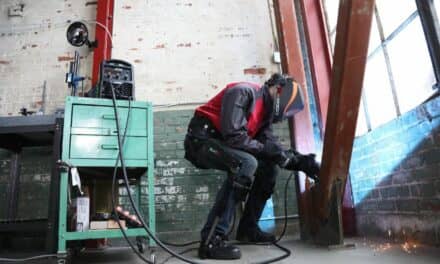Falls may be inevitable. But the difference in the fall leading to an injury is learning how to land. Kessler Institute for Rehabilitation provides tips to help you protect yourself in case a fall occurs.
Unintentional, preventable injuries resulting from accidents became the third leading cause of death in the United States reportedly for the first time in recorded history, according to a data analysis from the National Safety Council.
Among these injuries are those resulting from falls, which according to the analysis is the second leading cause of injury-related deaths behind motor vehicle accidents. They also are reportedly the leading cause of all non-fatal injuries and the most common reason for visits to the emergency department.
Allison Averill, MD, director of neurorehabilitation, Kessler Institute for Rehabilitation, notes in a media release that although falls are often associated with children or the elderly, 50- to 60-year-olds tend to experience more falls than older individuals.
“And while falling at some point in time is inevitable, there are ways to protect yourself from serious injury by creating a safer environment in and around your home and also by learning how to fall,” she adds.
According to Kessler Institute, understanding the science of falling is critical. It isn’t what caused the fall, but what you do in those brief seconds before hitting the ground that make the difference.
Kessler offers the following seven tips to help you protect yourself in the event of a fall:
1) Protect your head. Falls are the No 1 cause of traumatic brain injury in the United States, accounting for nearly half of these injuries. To help minimize the risk, try to tuck your head toward your chest if falling backward and turn your head to the side if falling forward.
2) Reach and relax. Although it’s natural to tense up, try to stay loose and reach with your arms bent to help cushion your fall.
3) Butt first. Falls are the second leading cause of spinal cord injuries. To help distribute the impact of a fall, try to land on the fleshier parts of your body and roll with the fall.
Reducing the risk of falling is equally important—and that includes paying attention to both physical and environmental factors.
4) Eliminate clutter. Keep pathways clear by moving furniture or removing throw rugs, toys, and other obstacles in the home, as well as tools, hoses, and other items outdoors.
5) Focus on safety. Make sure rooms are well lit, and use handrails on stairways and grab bars in the bath or shower. Outdoors, pay attention to the pavement or other surfaces and weather conditions. Even at the market or the mall, watch the flooring, displays, and other potential hazards.
6) Build your balance. Developing core strength and flexibility through exercise and/or physical therapy, along with training like tai chi, may help improve balance.
7) Check your eyes—and your meds. Poor eyesight, certain medications, and even your diet—as well as the effects of arthritis, MS, Parkinson’s disease, Alzheimer’s, stroke, and other medical conditions—can affect balance and coordination and lead to falls. See a physician if you experience any difficulties.
“Falls will happen,” Averill cautions. “The best defense to help avoid injury is to minimize risk factors in and around your home, workplace, and community. And in that split second as you begin to fall, remember how to prepare to land.”
[Source(s): Kessler Institute for Rehabilitation, National Safety Council, PR Newswire]





